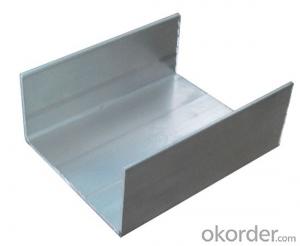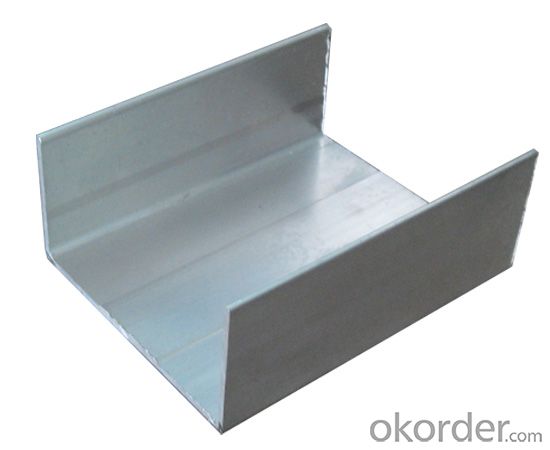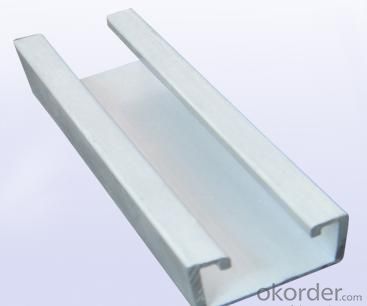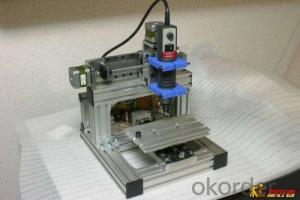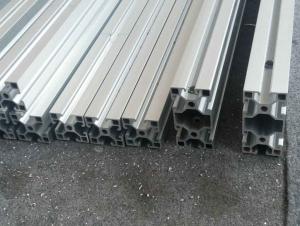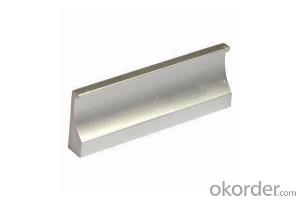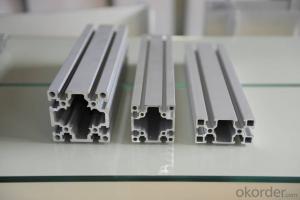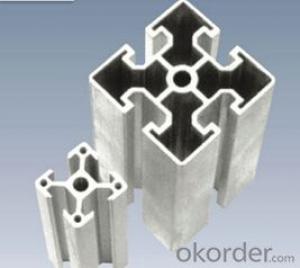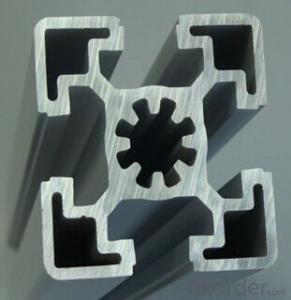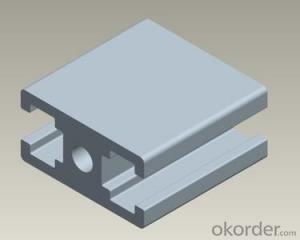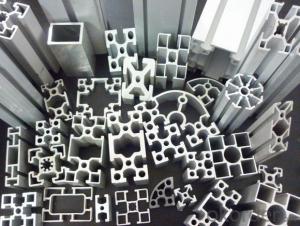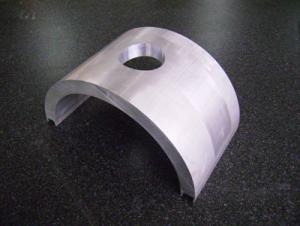Custom CNC Processed Aluminum Channel Profiles
- Loading Port:
- Shanghai
- Payment Terms:
- TT OR LC
- Min Order Qty:
- 5 m.t.
- Supply Capability:
- 1000 m.t./month
OKorder Service Pledge
OKorder Financial Service
You Might Also Like
Specification
1.Structure of Aluminum Profile of Custom CNC Processing Description:
Anodizing (also spelled anodising, particularly in the UK and Australia) is an electrolytic passivation process used to increase the thickness of the natural oxide layer on the surface of metal parts. Anodized aluminium surfaces, for example, are harder than aluminium but have low to moderate wear resistance that can be improved with increasing thickness or by applying suitable sealing substances.
2.Main Features of the Aluminum Profile of Custom CNC Processing:
High corrosion-resistance;
weather-resistance;
heat-resistance;
alkali-resistance and impact-resistance properties.
3.Aluminum Profile of Custom CNC Processing Images:
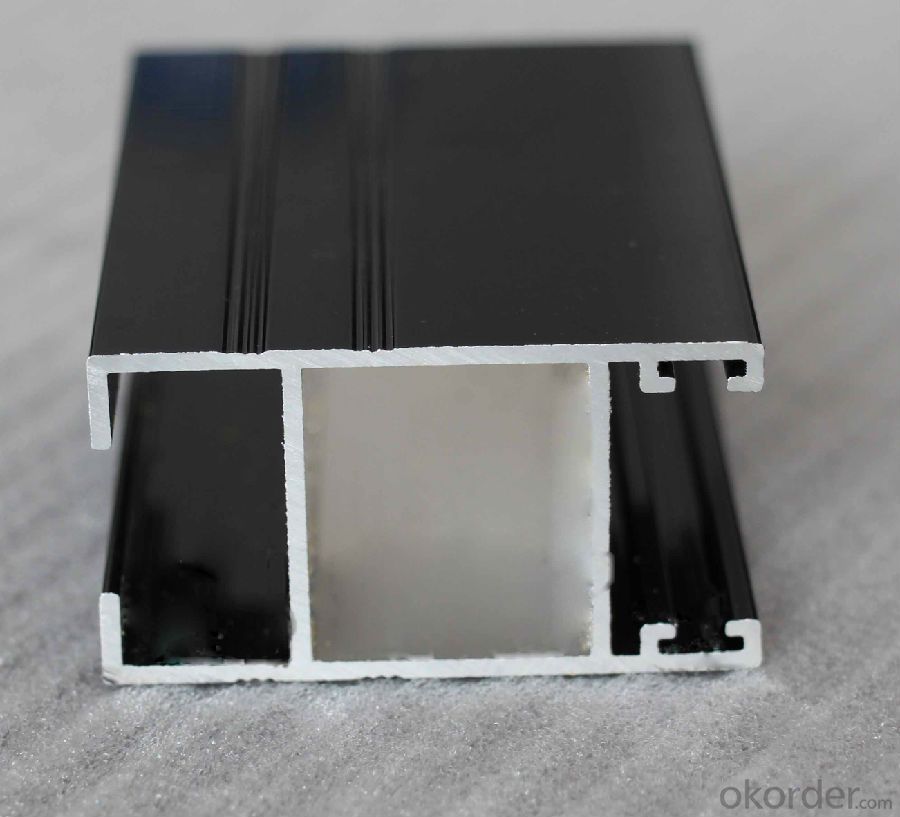
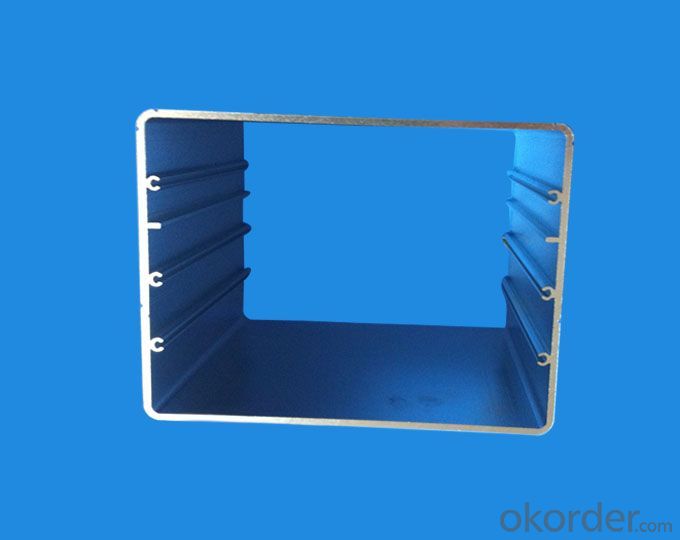
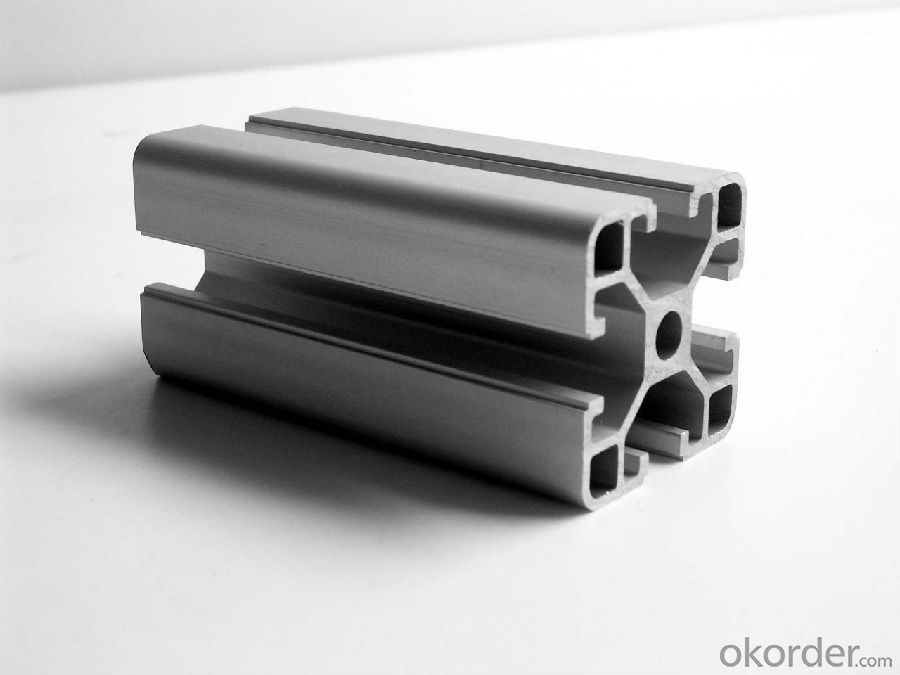
4.Aluminum Profile of Custom CNC Processing Specification:
1. Material: 6063,6061,6060,6005,6005A,etc.
2. Temper: T5 or T6
3. Finish: Mill finish, anodizing, powder coating, electrophoresis, wooden transfer or pvdf/carbon-flouride coated, polishing, brushing, sand blasting
4. Various colors: Silver, bronze, black, gold, blue, grey, champagne, bright, etc.
5. Machining: Cutting, punching, drilling, tapping, milling, bending, welding, CNC etc.
5.FAQ:
①How about your company?
A world class manufacturer & supplier of castings forging in carbon steel and alloy steel,is one of the large-scale professional investment casting production bases in China, consisting of both casting foundry forging and machining factory. Annually more than 8000 tons Precision casting and forging parts are exported to markets in Europe, America and Japan. OEM casting and forging service available according to customer’s requirements.
②How to guarantee the quality of the products?
We have established the international advanced quality management system,every link from raw material to final product we have strict quality test;We resolutely put an end to unqualified products flowing into the market. At the same time, we will provide necessary follow-up service assurance.
- Q: Who would like to know, aluminum radiator mainly used in which instruments or equipment, trouble to say more detailed points, thank you
- Large, such as ZTE, HUAWEI communications control center, as well as the main table server, large cabinet
- Q: Can you quote me one according to the current market situation?
- Aluminum: aluminum ingot + processing fee + Spray + heat insulationAluminum plate: square meter, unit price (depending on thickness) + spraying, etc.You cannot quote without specific parameters
- Q: This question asks if aluminum profiles are suitable for both exterior and interior uses.
- <p>Yes, aluminum profiles can be used for both exterior and interior applications. They are popular for exterior use due to their resistance to weather and corrosion, making them ideal for construction and architectural projects. For interior applications, aluminum profiles are valued for their strength, lightweight, and aesthetic appeal, often used in furniture, window frames, and decorative elements. Their versatility and durability make them a preferred choice in various settings.</p>
- Q: What are the different types of surface protection for aluminum profiles?
- Aluminum profiles have various surface protection options available to enhance their durability, aesthetics, and protection against environmental factors. 1. Anodizing: Anodizing is a commonly used method to protect aluminum profiles. It involves creating a protective oxide layer through an electrochemical process. This process offers excellent corrosion resistance and can be done in different colors. 2. Powder Coating: Powder coating entails applying a dry powder to the aluminum profiles and curing it under heat to form a protective layer. It provides a wide range of color options, exceptional durability, and resistance to scratching, chipping, and fading. 3. Paint: Painting is an alternative for surface protection. It involves applying a liquid paint coating for both protection and aesthetic enhancement. The color, texture, and finish of the paint can be customized, but it may not be as durable as other options. 4. Clear Coating: Clear coating is a transparent protective layer that can be applied to aluminum profiles. It offers a glossy finish while preserving the natural appearance of the aluminum. Clear coating protects against corrosion, UV radiation, and other environmental factors. 5. Cladding: Another option is cladding, which involves covering the aluminum profiles with materials like stainless steel or composite panels. This provides additional protection against corrosion and wear, while also adding aesthetic appeal and design flexibility. 6. Film/Protective Tape: Applying temporary film or protective tape to aluminum profiles offers short-term protection during transportation, installation, or construction. These films or tapes can be easily removed after use, leaving the aluminum profile intact. Each surface protection option has its own pros and cons, and the choice depends on specific requirements, desired aesthetics, budget, and expected environmental conditions.
- Q: Is it possible to utilize aluminum profiles in regions with low temperatures?
- <p>Yes, aluminum profiles can be used in cold climates. Aluminum is a durable material with excellent resistance to corrosion and weathering, including low temperatures. It maintains its strength and does not rust or degrade in cold conditions. However, it's important to consider thermal expansion and contraction, as aluminum expands and contracts more than some other materials. Proper design and installation practices can mitigate these effects, making aluminum profiles suitable for use even in extreme cold environments.</p>
- Q: Can aluminum profiles be used in display shelving and racking systems?
- Yes, aluminum profiles can definitely be used in display shelving and racking systems. Aluminum is a versatile and lightweight material that offers several advantages for these applications. Its strength-to-weight ratio makes it ideal for constructing sturdy and durable shelving and racking systems. Aluminum profiles can be easily customized and fabricated to meet specific design requirements, allowing for flexibility in creating different shelving configurations. Additionally, aluminum is corrosion-resistant, which is particularly beneficial in environments where moisture or chemicals may be present. The sleek and modern appearance of aluminum profiles also adds an aesthetic appeal to display shelving and racking systems. Overall, aluminum profiles are a popular choice for these applications due to their strength, versatility, and aesthetic qualities.
- Q: This question asks about the methods to ensure that aluminum profiles used in construction meet safety standards.
- <p>To ensure that aluminum profiles used in building construction meet safety standards, you should follow these steps: 1) Source from reputable suppliers who adhere to industry standards. 2) Check for certifications such as ISO 9001 for quality management. 3) Verify the aluminum's grade and alloy type to ensure it's suitable for construction use. 4) Conduct regular inspections and tests, including tensile strength and load-bearing capacity tests. 5) Adhere to local building codes and regulations. 6) Use profiles with appropriate thickness and dimensions for the intended application. 7) Consult with engineers or architects to ensure proper design and installation. 8) Keep records of all tests and inspections for future reference and compliance checks.</p>
- Q: Can aluminum profiles be used for exhibition stands?
- Yes, aluminum profiles can be used for exhibition stands. Aluminum profiles are lightweight and versatile, making them an ideal choice for exhibition stands. They can be easily assembled and disassembled, allowing for easy transportation and storage. Additionally, aluminum profiles can be customized to fit the specific design and layout requirements of an exhibition stand. They can be used to create frames, partitions, and display panels, providing a sturdy and professional-looking structure. The use of aluminum profiles in exhibition stands also offers the flexibility to add accessories such as lighting fixtures, shelving, and signage, further enhancing the overall visual appeal and functionality of the stand.
- Q: Inquire if aluminum profiles can be recycled locally or regionally and how to find more information about it.
- <p>Yes, aluminum profiles can be recycled both locally and regionally. Recycling aluminum is an efficient process that conserves resources and energy. To find out more about local recycling options for aluminum profiles, you can: 1) Contact your local waste management or recycling center to inquire about their services. 2) Search online for recycling facilities in your region that specialize in aluminum. 3) Reach out to local metal scrapyards, as they often accept aluminum for recycling. 4) Check with local environmental agencies or non-profit organizations focused on recycling for guidance and resources.</p>
- Q: Are aluminum profiles suitable for use in the telecommunications industry?
- Indeed, the telecommunications industry finds aluminum profiles to be a fitting option. Aluminum, a lightweight and durable material, offers numerous advantages in this field. Firstly, aluminum profiles possess corrosion-resistant qualities, rendering them ideal for outdoor installations like telecommunication towers and antennas which endure harsh weather conditions. This resistance to corrosion ensures the equipment's longevity and reliability. Secondly, aluminum profiles exhibit exceptional thermal conductivity properties, enabling efficient heat dissipation. This attribute holds significant importance in the telecommunications sector, where electronic components generate heat that can impair their performance. By adopting aluminum profiles, cooling systems can be optimized, guaranteeing the equipment's proper functioning. Moreover, aluminum profiles are remarkably versatile, allowing easy customization and fabrication to meet specific requirements. This empowers telecommunications companies to design and construct tailored structures, enclosures, and mounting solutions. Aluminum profiles can be conveniently assembled, disassembled, or modified as needed, offering flexibility in installation and maintenance. Additionally, aluminum profiles provide electromagnetic shielding properties, playing a crucial role in minimizing interference between different communication systems. This shielding helps maintain the quality and reliability of transmitted signals. Furthermore, aluminum stands as a sustainable material, being 100% recyclable and possessing a low carbon footprint compared to other metals. This renders it an environmentally friendly choice for the telecommunications industry, aligning with the increasing emphasis on sustainability and reducing environmental impact. In conclusion, due to their corrosion resistance, thermal conductivity, versatility, electromagnetic shielding properties, and sustainability, aluminum profiles prove to be highly suitable for implementation in the telecommunications industry. These qualities establish aluminum profiles as a dependable and efficient choice for various applications in telecommunications infrastructure.
Send your message to us
Custom CNC Processed Aluminum Channel Profiles
- Loading Port:
- Shanghai
- Payment Terms:
- TT OR LC
- Min Order Qty:
- 5 m.t.
- Supply Capability:
- 1000 m.t./month
OKorder Service Pledge
OKorder Financial Service
Similar products
Hot products
Hot Searches
Related keywords
